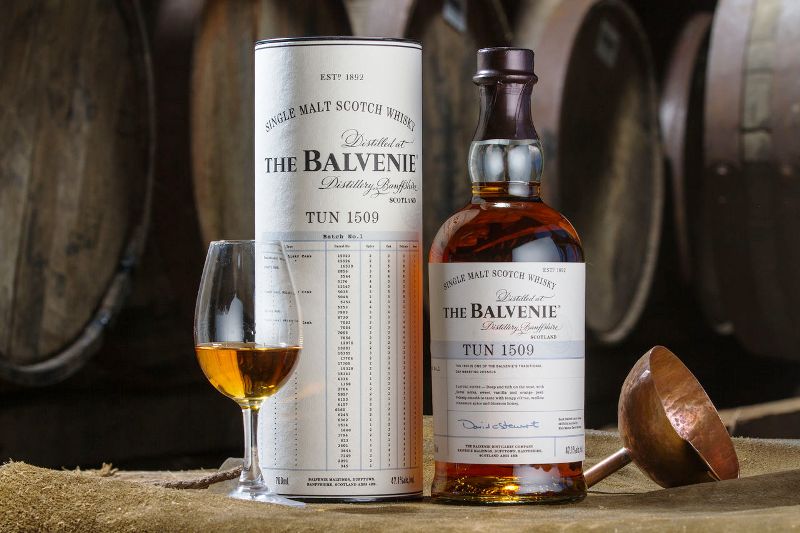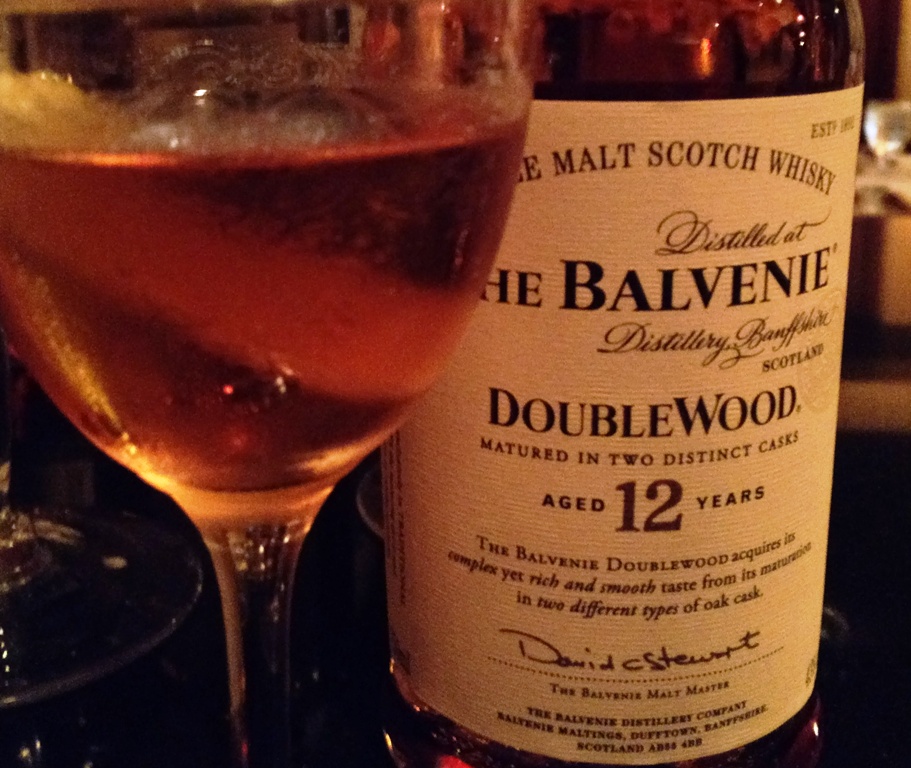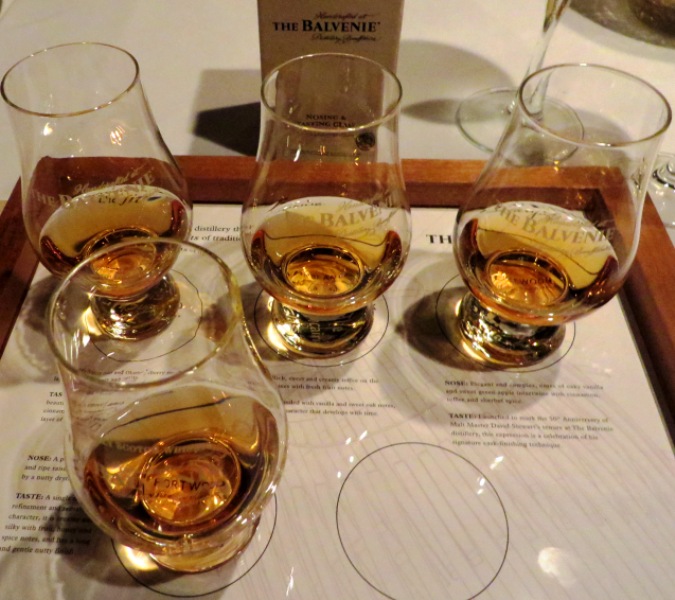The Balvenie Single Malt Scotch Tasting Review
The legendary Scotch whisky distillery of The Balvenie recently invited us to The Balvenie Rare Craft Master Class hosted by their stateside ambassador, Gemma Peterson, at 32 East, a fine dining restaurant in downtown Delray Beach.
After entering past 32 East’s street-side terrace along Atlantic Avenue, I headed up to the dark wood paneled bar on the upper level dining area. There, the bartender greeted our tasting class with a Robbie Burns cocktail served straight up.
The sweet, but potent, cocktail was made with The Balvenie DoubleWood 12 year old, sweet vermouth and Benedictine, then garnished with a lemon twist. The Robbie Burns is modeled after the pre-prohibition Rob Roy, and named after a famous Scottish poet and lyricist best known for his poem and song Auld Lang Syne.
The Balvenie single malt Scotch whisky distillery is located in Dufftown, Scotland within Speyside, a region in the Scottish Highlands, and owned by William Grant & Sons.
To be a single malt scotch does not mean that it’s the product of a single batch or a single barrel. Rather, to be a single malt scotch, the whisky must have been distilled in Scotland at a single distillery using only barley grain. Also, the whisky must be matured in oak casks, in Scotland, for at least three years, plus one day.
Our group sat down for a nosing and tasting class covering four special single malt scotches from the Balvenie collection, handcrafted by Malt Master David Stewart. Each was poured neat in a tulip-shaped nosing glass whose shape directs aroma to the nose.
A neat pour, in my opinion, is the best way to drink expensive single-malt as I believe ice, no matter how perfect, or water dulls the rich flavor. However, water and a dropper were placed at each setting to add a few drops to open up the whiskey.
At the end, we gained a deeper understanding of how each was defined by Balvenie’s aging process in barrel casks previously used for American bourbon, Caribbean rum, or Spanish port.
We started the evening with Balvenie’s pale copper tinted DoubleWood, which is matured in two bourbon casks for a total of 12 years. To the nose was sweet honey with a touch of spice, and to the taste was soft vanilla and oak wood, with a long-lasting finish.
For our second taste, was the golden-colored Caribbean Cask, which is matured in traditional oak whisky casks for 14 years, then finished in Caribbean rum casks. To the nose was golden raisins and marshmallows, and to the taste was toffee, with a oaky finish. When water was added by a dropper, the flavor of passionfruit came to mind.
Next, we sipped a 17 year old version of DoubleWood, which is amber hued, and matured in two bourbon casks for a total of 17 years. To the nose was peach preserves, honey and cinnamon, and to the taste was vanilla and brown sugar, with a warm finish.
Lastly, brightly amber colored PortWood is crafted by transferring rare Balvenie to Spanish port casks, and aging for 21 years. To the nose was raisins and a hint of smoke, and to the taste was ripe fruit, honey and spice, with a delicate and slight nutty finish.
At the end of the evening, in honor of David Stewart, who is celebrating his 50 year anniversary as Balvenie’s Malt Master, we happily toasted Slàinte! – the Scottish Gaelic equivalent of cheers.


